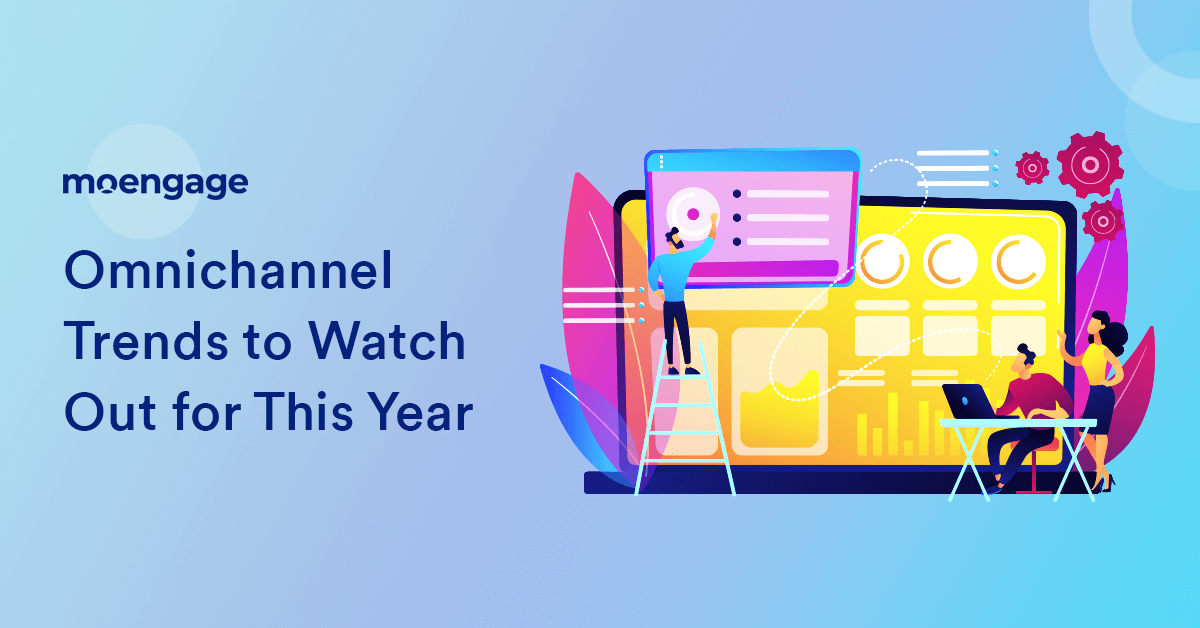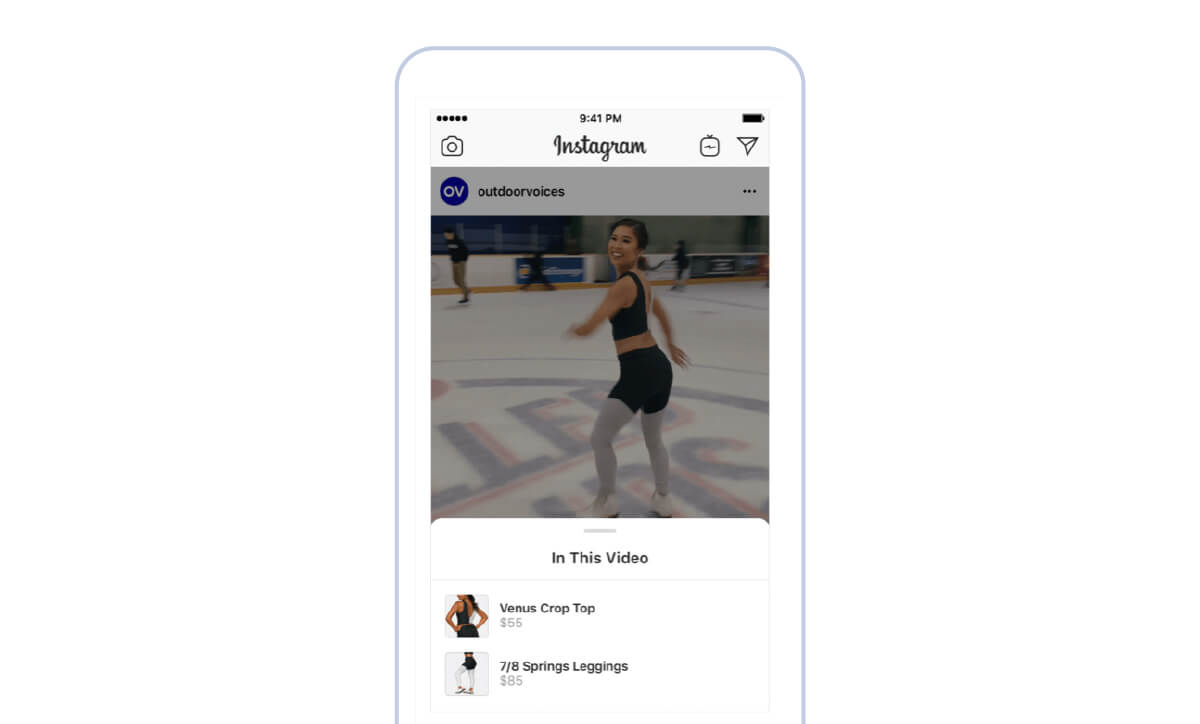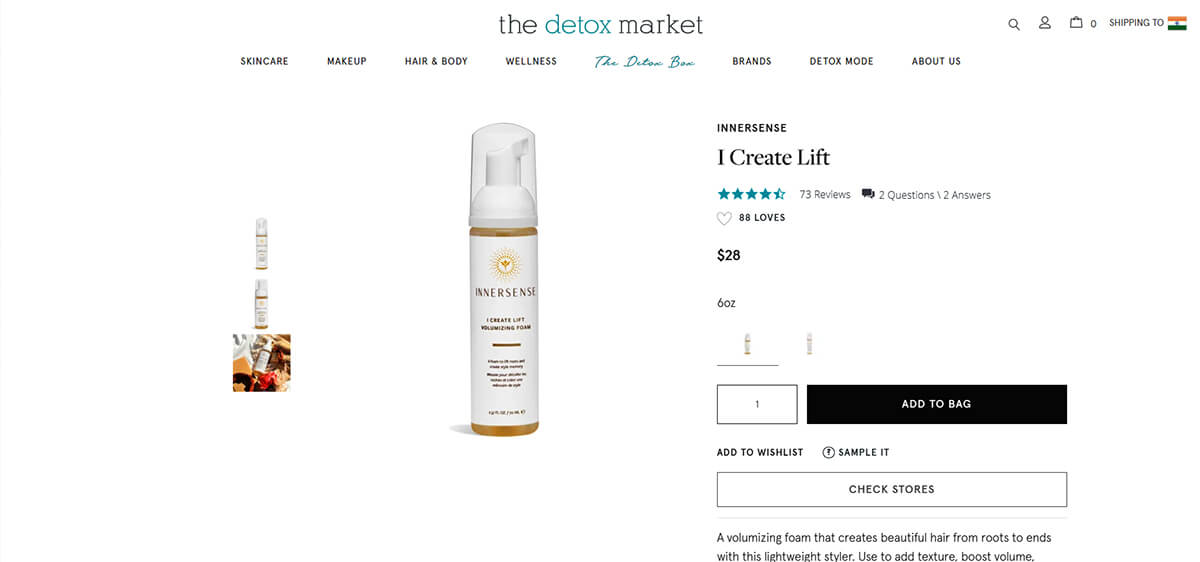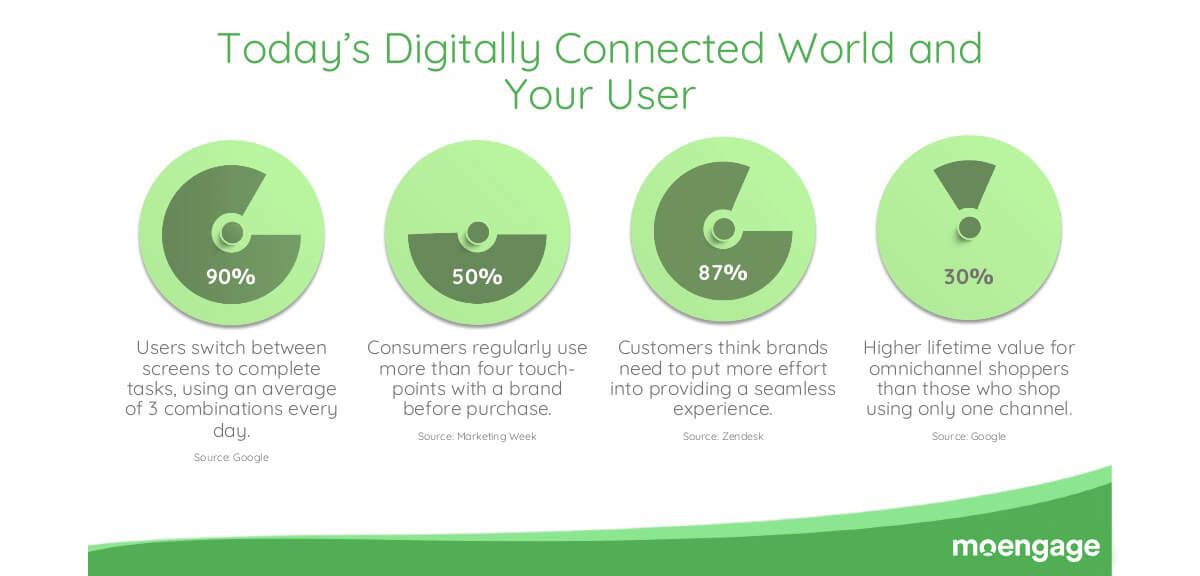Omnichannel Marketing Trends to Watch Out for 2023

Jane was having a busy day at work. She figured she’d be late in reaching home. Poor Fido, she thought, he’ll have to wait for his walk.
And then, it struck her. She had emptied the last bag of dog food into Fido’s bowl before leaving for work in the morning. What was she going to do?
She jumped online to check the inventory at a nearby store that fell on her way back home. Fortunately, a bag of Fido’s favorite brand was available. She swiftly added the item to her cart and opted for a curbside pickup at 7 pm. She also chose to pay on the spot using a QR code, as she found it swift and hassle-free.
Like Jane, today’s consumers tend to shop across multiple channels and multiple devices. They may like something online and head to a store to purchase it. Or, they may be at a brick-and-mortar store and prefer to compare products and reviews online before completing the purchase. Simply put, customer journeys are no longer linear, and there can be endless scenarios involving various touchpoints. An omnichannel strategy ensures that each of these channels is interconnected to provide a seamless purchase journey.
|
|
Being Omnichannel: From Click to Smile
Omnichannel shopping (both online and in-store) grew by 50% last year, fuelled majorly by the coronavirus pandemic. Nielsen also found that more consumers are using online channels to not only purchase goods but also research their options and identify physical stores. Clearly, consumers have grown used to moving between the physical and digital worlds and expect businesses to make this shift easier – which they are, by creating unified experiences across touchpoints for a truly omnichannel shopping experience.
But is that enough to stand out from the crowd?
Well, the answer is both a yes and no.
Creating an omnichannel retail experience will certainly do good for your brand. However, with most retailers catching on to the trend, you need to provide something extra to your customers, which meets their changing expectations, bridges a market gap or amazes them. So, if you’re just getting on the omnichannel bandwagon, here’s a handy guide to get you started. And, if you’re already an omnichannel brand that’s ready for the next step, here are some trends to shape your strategy in 2023:
1. The Rise of Phygital Retail
As consumers, we can see the blurring of lines between physical and digital retail. Whether it is contactless payments, curbside pickups, or AR-enabled experiences empowered by the likes of IKEA to envision the couch in your room – many of our shopping experiences begin online and transcend offline or vice-versa.
Putting it simply, even though online has increased in value and preference, offline remains an important channel for brand building and awareness. You need to pick up the best elements of each and use them together to enhance your overall customer experience.
A Rise in Contactless Transactions
If you’re looking for examples, let’s start with something that’s already mainstream – buy online and collect in-store option. Here, you enjoy the convenience of online shopping without having to wait for days for shipping. The reverse – buy in-store, deliver at home – gives you the satisfaction of buying physically. Still, all the sales are managed in a digital environment, with home delivery of purchased items. You can read this case study about Decathlon creating a truly omnichannel experience for its customers by enabling curbside pickups and contactless payments during the pandemic, amongst other things.
Location-Based Mobile Marketing
Another application of phygital you might have experienced time and again are the location-based push notifications. Uber uses location-based marketing to inform people of the availability of cabs near the airport. At the same time, Starbucks sends personalized offers and messages to customers in the vicinity of a store. You may use the same technology to send someone a discount as they walk by or let a past customer know about your updated stock while they’re in the area.
Use of AR/VR Technologies
Yet another trend that’s not true but likely to catch up big time is the use of virtual reality (VR) and augmented reality (AR) technologies to merge online and offline experiences in stores. The most commonly cited example in this regard is the IKEA Place app that enables customers to virtually place true-to-scale 3D models of furniture and accessories in their rooms. Using the same concept, retail stores are creating 360-degree experiences allowing the customers to shop online by browsing the shelves.
2. Using Social Videos to Sell
There’s been a phenomenal increase in video consumption, with consumers spending about one-third of their time online watching videos. Consumers are also more likely to buy a product after watching a video, making it the perfect tool for social selling.
In the past few years, brands have consistently used images on social media platforms like Pinterest, Instagram, and Facebook to promote sales. By clicking on an image, customers are generally redirected to the brand’s product page to complete the purchase. But what if customers could click on videos to access the product purchase details?
At a time when brands have lost out on the live interactions they depended upon in the past, shoppable videos are the next best option – offering the spontaneity of live interactions and the convenience of a quick online sale. Not surprisingly, experts predict shoppable videos to be the next big trend in omnichannel retail. This will also include selling through social media influencers, who will remain reliable sources of information and recommendations for consumers.

|
In the image above, you can see an example of a shoppable video from Instagram. A couple of years ago, the ‘Gram inserted a shopping icon in the bottom left corner of branded videos to highlight the products featured in the video. This made it easier for users to view the product prices. However, these videos are only shoppable on the Instagram app, but we will surely see omnichannel videos for shopping in the near future.
3. Using Customer Data to Drive Omnichannel Experiences
E-commerce players have always used data and customer relationships to drive sales. But can you apply this model to other sales channels to cultivate better customer experiences?
Indeed, you can, and your customers will appreciate it. That’s because as many as 73% of consumers use multiple channels in their buying journey and expect the same experience at every channel or touchpoint they use. Using their behavioral data makes it possible to provide a more personalized experience, both online and offline, which boosts brand loyalty and engagement. Besides, digital habits apply online. Consumers not only research products online before adding them to their cart but also research products online before making an offline purchase. Therefore, tracking online data and leveraging it across channels makes perfect sense to unify your customer experience.
Here’s an interesting example from The Detox Market that used customer insights from their offline model to create a successful online model during the pandemic. Before the pandemic, customers could visit one of their retail locations for a personalized appointment. This hyper-personal experience resonated with their audience and turned out to be a successful initiative. Once the pandemic hit, the brand leveraged the same model to create an online shopping experience closely mirroring the in-store experience. Presently, the site allows customers to shop virtually after personalized assessments via text, live chat, and video calls in real-time.

Source: The Detox Market |
Final Words
With the line between the physical and digital blurring, it’s time to implement an omnichannel strategy for your business or face the wrath of dissatisfied customers. Going omnichannel is not just limited to retail, but also applies to your marketing and customer support functions. For more tips on omnichannel marketing and opinions from industry experts, follow our blog. We promise to bring you the best information to help you strengthen your omnichannel strategy.
Here’s What You Can Read Next |







